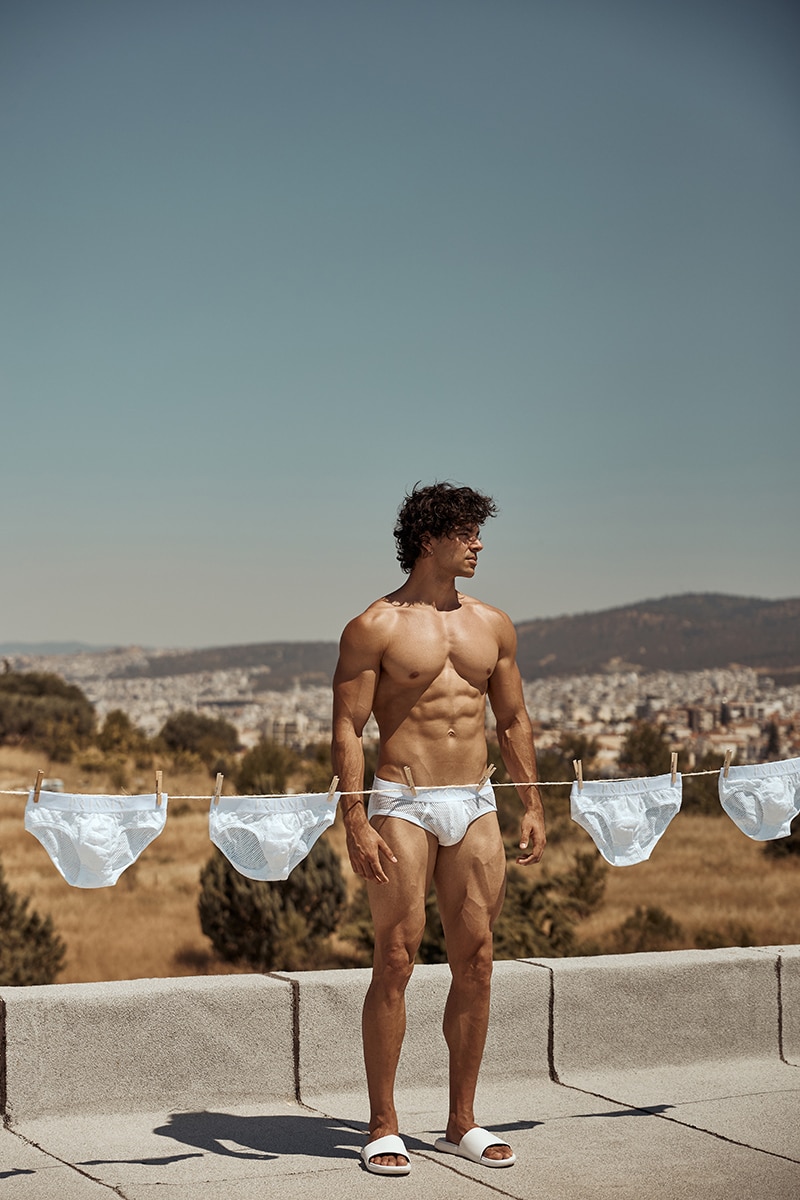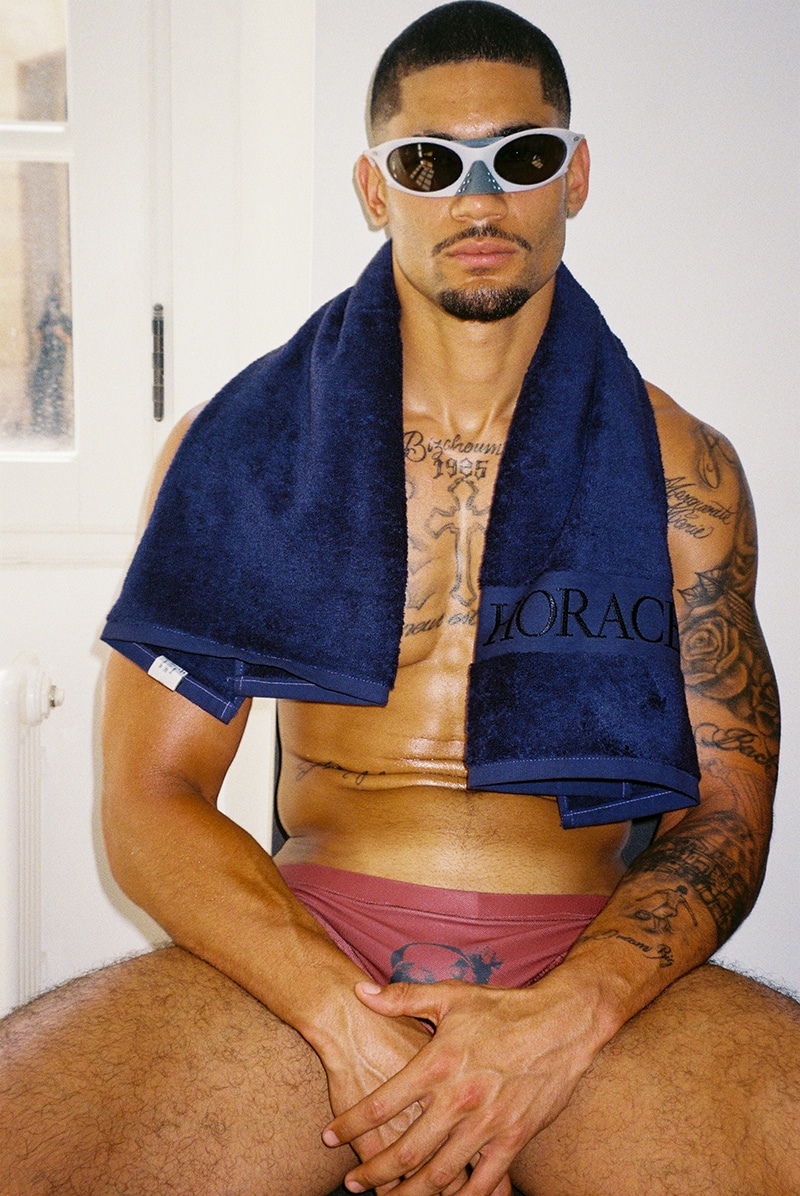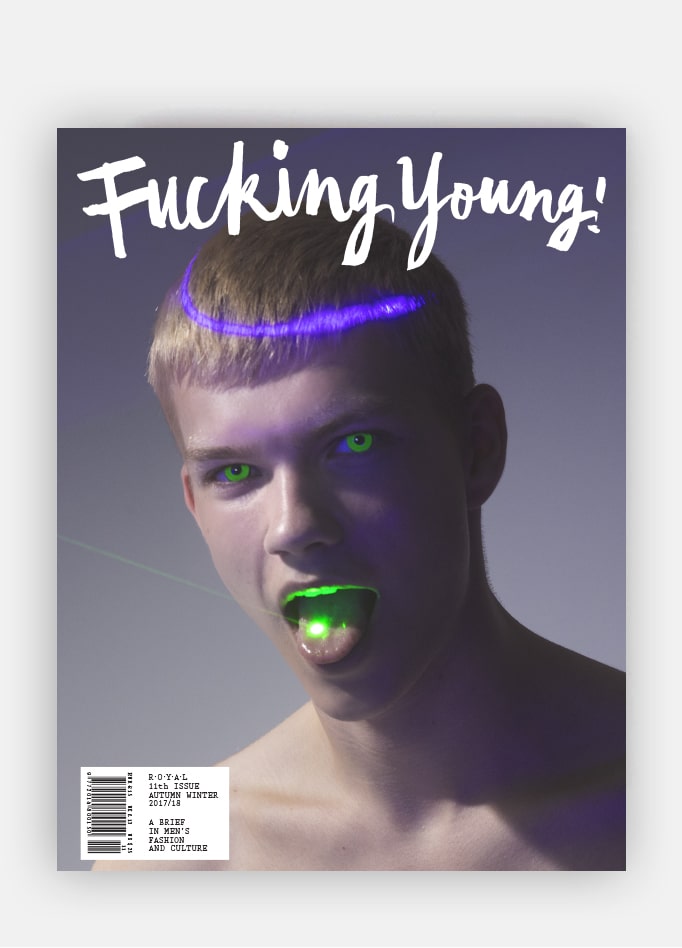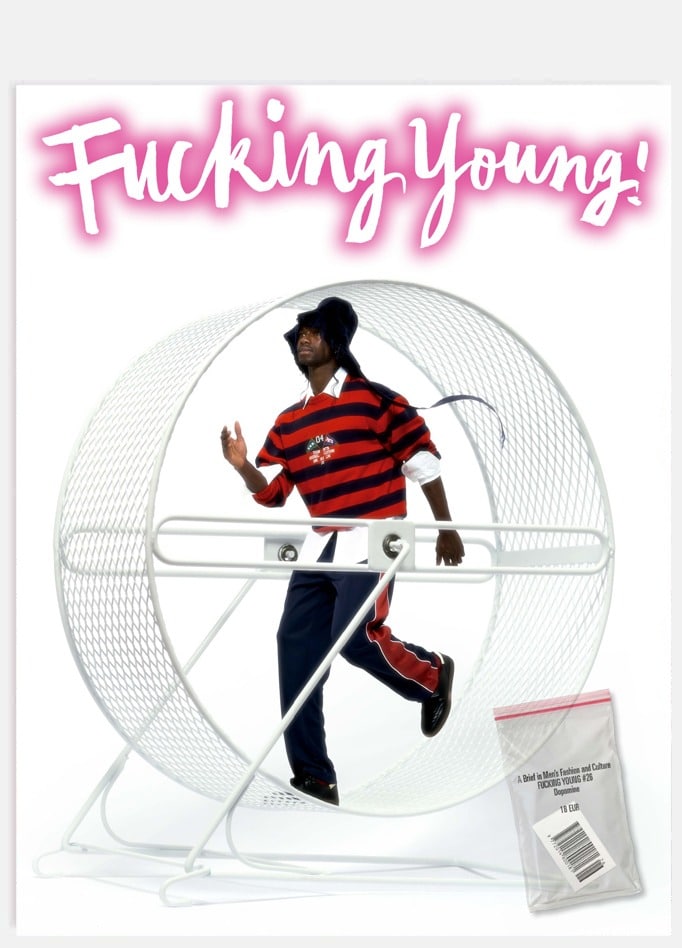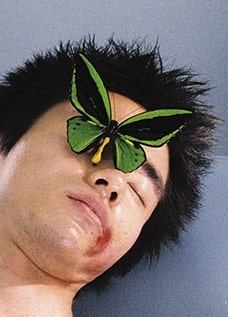
Times are definitely changing, and fashion has always been a reflection of that and even sometimes the cause that triggered the change. A new generation of fashion students is proof of that.
IED offers in Spain the Bachelor of Arts in Fashion Design in Madrid and Barcelona. It also offers the Certificate of Higher Education in Pattern Making in Madrid, as well as the Bachelor of Arts (Hons) in Fashion Design in collaboration with the University of Westminster in Barcelona.
We sat down with some students from the IED Madrid and IED Barcelona, one of the best fashion and design schools in Europe, and we noticed in their works these same changes we are also experiencing in the way we live. Consciously or subconsciously, the breakup with rules that were part of our lives for so long is present, conceptually and physically, in their designs.
I’m talking about the gender rules. The separation between masculine and feminine is less and less visible and the result is an explosion of creativity without norms to obey. There are also concerns about the moment we’re living and how they can help the world creating more sustainable collections, and almost all of them agree that creating a non-binary collection can also be a form of sustainability.
We talked with five students from IED about the present and the future, about gender and sustainability. Here’s what they told us:
Aitor Goicoechea
4º Year Bachelor of Arts in Fashion Design at IED Barcelona

Do you think your creative part has been stimulated taking into account all the handicaps resulting from the pandemic?
Totally! If, because of the way we usually work, we have to find solutions to carry a garment concept in the most affordable way, with the pandemic this has multiplied by a hundred. For example, the fact of working from home on some occasions made me see everything that surrounded me with different eyes, and see options that I did not even consider before in the things that were within my reach.
Everything we are experiencing will surely change our perspective of consumption. Have you taken that into account when creating a collection?
Hopefully, this ends up being true and does not remain in one more anecdote of the pandemic. Because people in general really want to go back to how we were and that means going back to bad habits as well. Personally, I place a lot of value on the fabrics that I use since they will implicitly be the contribution of color in the look, and I consider that the way I work values things such as creativity or the concept in garments taken to the extreme, it is something to which that not everyone would agree to consume, but as long as I study I will continue to do so.
What have you been inspired by? Describe your collection briefly.
The main inspiration for the collection was a fictional scene based on reality. The moment in which in an airport you take “your suitcase” and when you open it you realize that you have been confused and that you have someone else’s clothes. I am passionate about the mental exercise that this supposes for the affected person since they begin to scan the clothes technically from their globality to the most minimal details to specify a profile of a person. Even not just the clothes but the way it is styled. That is why I worked combining various types of garments in the look and worked on lectures by various artists who had worked with lost luggage and mounted installations or sculptures with these garments.
Another change, consequent on the time in which we live, is the greatest consideration when it comes to inspiring ourselves in other cultures. What is your process when looking for references without falling into cultural appropriation?
Inspiring myself directly from other cultures is a point that I have not yet reached directly but surely indirectly. In an attempt to be transparent and creative, I have always decided to work on more personal themes or concepts or that you suppose a message that can represent me in some way. I think this happens to me because creativity flows more when you work on a topic that touches you directly or with which you empathize more.
Do you think risk is necessary to be successful?
I feel that the important thing is to find the balance between being risky and knowing who to offer it to. Therefore, a monstrous look is not always going to be fantastic, you have to manage many nuances in each project so that it works as such, and then success would come from the hands of others.

How would you define the man you design for?
Well, without a doubt, a man with whom I could feel identified. Someone who wants to have fun with the clothes he wears and who is conquered by colors, a self-confident man who does not care about the more he is more. Although he does not fulfill all this it is more an aspirational point.
Possibly in the not too distant future, gender rules in fashion will be irrelevant. Do you think that the fashion industry plays a fundamental role in opening the minds of society? Is it reflected in your collection?
I totally believe that in the world of fashion, considering myself part of it, we have a very great responsibility with this issue. The way we communicate the garments will be the message that reaches people. In addition, we could already consider that we are living that moment of change in an increasingly intense way towards the loss of the gender rules. Although from the inside, above all we do not like to work on a trend directly, we do have to appreciate that when deciding which trends we are going to follow in a few years, we are also building the paths where people will walk.
Is non-binary clothing a way to be sustainable?
A priori would be a resounding yes, but we may end up finding more expensive clothes than we are used to. The price of sustainability begins with awareness.
How do you see the future of fashion?
Fashion will end up being a reflection of where we want to go as a society, and I think that we are increasingly aware that in terms of quality, it is not always better to have more clothes of lower quality but quite the opposite. Reducing the amount of garments that are produced, and managing consumption from a more critical and conscious point of view, I think is one of the next steps to take.
Miguel Conde
2º Degree in Higher Education in Pattern Making and Fashion Design at IED MADRID
Do you think your creative part has been stimulated taking into account all the handicaps resulting from the pandemic?
Not at all, quite the opposite. My creative part has been considerably diminished due to the increase in the level of stress and demotivation. On the other hand, these mental states allow exploring other creative features of design.
Everything we are experiencing will surely change our perspective of consumption. Have you taken that into account when creating a collection?
In my case from minute 1, my vision of fashion has been sustainable in the sense of production, focusing on unique garments made by hand by myself. It is true that in recent times support for slow fashion and the visibility of the inconveniences of fast fashion has increased, but in my opinion, it is very far from achieving an ethical perspective regarding consumption in the textile sector.
What have you been inspired by? Describe your collection briefly.
In this case, for the creation of this coat, (the only garment made in the collection) I decided to be inspired by the Balenciaga fashion house; in the contrast of its creator Cristóbal Balenciaga and its current creative director Demna Gvasalia, paying attention to the shapes and volumes, the architectural precision and the reinvented history of the firm as well as the macro-trend “Fantasmagoria” for the Fall/Winter 21/22 season focusing on other trends of this such as modern gothic, dark arts, anti-formal, the resurgence of shadows, digital dystopia and forgotten masters among others. The collection is made up of suit sets consisting of a jacket, shirt and pants, coats, capes, tracksuit sets, and basic T-shirts and bathrobes; The T-type silhouette and the maxi-shoulder straps predominate in all the looks.

Do you think risk is necessary to be successful?
On the one hand, the typical phrase that we have all heard at some point comes to mind. “Who does not risk does not win”, in part I agree but I believe that success can also be achieved by taking small and safe steps on your way to it.
How would you define the man you design for?
I try not to think of any archetype, only of a man who “dares” to dress beyond the common or socially accepted. Although I have to add that I don’t think of any genre when I design clothes.
Possibly in the not too distant future, gender rules in fashion will be irrelevant. Do you think that the fashion industry plays a fundamental role in opening the minds of society? Is it reflected in your collection?
“The rules are to be broken” and hopefully they will, since I believe that gender has nothing to do with fashion and should be out of it. Of course, the fashion industry plays a fundamental role in opening the minds of society, so it should be the first to set an example, although finally opening the mind regarding this issue resides in the individual decision of each one among other things… Like changing society’s perspective on consumption, it is a process that takes a long time to “evolve”. In my collection there are no genres, nor has it been designed with any specific in mind, anyone can wear it.
Mariona Sardà
4º Year Bachelor of Arts in Fashion Design at IED Barcelona

Considering the moment in which we live, what have been the greatest difficulties when creating a collection?
For me, the most difficult thing was to find motivation in full confinement since it was a completely new and emotionally unstable situation for everyone. In the end, it helped me to realize that I had even more desire to do what I like and continue creating.
Everything we are experiencing will surely change our perspective of consumption. Have you taken that into account when creating a collection?
I think that in some way it has also been a wake-up call and a forced stop that has made me realize that we have a frenetic pace of life and consumption that is totally impossible to compensate for. Although I consider that for some time now I have been quite aware of this issue, now I try to be more critical of myself and force myself to control my impact on consumption and when creating, whether environmental or ethical. They are small details that I think make a difference, such as controlling the cost of paper, trying to reuse materials, and being aware of the origin and composition of the fabrics.
What have you been inspired by? Describe your collection briefly.
My collection is inspired by the emotional disconnection with your parents, that moment in which you feel that you begin to get older and you begin to build yourself as a person.
Do you think risk is necessary to be successful?
I believe that the greater the risk one is subjected to, the greater the personal reward. I believe that each person can have a different idea of success because someone can become publicly recognized and therefore be successful but not be satisfied with himself or the other way around. Personally, the more I risk and force myself out of my comfort zone, the greater my satisfaction.
How would you define the man you design for?
I would describe him as a confident person who stomps and identifies with his clothes since I think the way we dress defines us as people.

Possibly in the not too distant future, gender rules in fashion will be irrelevant. Do you think that the fashion industry plays a fundamental role in opening the minds of society? Is it reflected in your collection?
More and more the idea of man/woman is becoming more unified and I believe that fashion can play a great role in society. If from a young age we had seen dresses, skirts, or bags in the men’s section in the stores, we would never have created a concept in our head of what is feminine or masculine. We should start breaking these canons now as I don’t think a piece of clothing can classify a person by their gender. I believe that clothes are created, apart from covering us, to complement us and not to pigeonhole us as people. In my collections mainly based on men, I like to include garments or shapes that could be conceived as feminine since I personally think that this way an even stronger vision and aesthetic is obtained. I believe in that man who does not need to affirm and emphasize his sexuality and is not afraid.
Is non-binary clothing a way to be sustainable?
Yes, I think that a wardrobe in which both genders feel identified has more options and reduces the purchase.
How do you see the future of fashion?
I believe that society in general evolves and changes very quickly and we must know how to take advantage of it. We should go back to working like a few years ago when people’s work was valued and respected, and when garments were valued by the way they were made, and where they came from.
Diego Martínez
4º Year Bachelor of Arts in Fashion Design at IED Barcelona

Considering the moment in which we live, what have been the greatest difficulties when creating a collection?
I think the greatest difficulty has been at the level of managing the tasks that make up the design process. It is not the same to design when you have everything within reach as to do it when there are restrictions on hours, products, and possibilities.
Everything we are experiencing will surely change our perspective of consumption. Have you taken that into account when creating a collection?
The collection that I am currently developing is made with up-cycling. This, I believe, is the way that fashion will have to advance, looking from an environmental and also an economic point of view.
What have you been inspired by? Describe your collection briefly.
For ZEIT, I have been inspired specifically by Berlin, and how there are two specific cultural aspects that I have highlighted, which are punctuality and rectitude that is evidenced in architecture, but in the same way that I talk about this, I mix it with the chaos and the “grunge” that is evident in the city.
How would you define the man you design for?
I would define him as a man who is not afraid of being looked at when he goes down the street. A man who is not afraid that his family will stop talking to him because he is who he is. A man who doesn’t apologize for his ideals.
Possibly in the not too distant future, gender rules in fashion will be irrelevant. Do you think that the fashion industry plays a fundamental role in opening the minds of society? Is it reflected in your collection?
I believe that the fashion industry is essential for society to change, fashion has always reflected what happens in a sociocultural context, but in a certain way, fashion itself generates these changes, because at the end of the day we live life in fashion.

What man would you like or would you have liked to wear?
I like to dress the common man, who does not have a big name or a lot of money, but who still wants to make it clear who he is with his clothes.
How do you see the future of fashion?
I see that it is slowly moving towards being more sustainable and genderless, also being more of the people. Big brands, even if they are renowned, are being overshadowed by many small brands that are beginning to take power and that are sustainable and transparent.
How do you see yourself in 5 years?
I see myself in the process of consolidating my brand and foundation. A personal project that I want to develop to help victims affected by the conflict in my country, Colombia, through fashion. I am currently working on my final degree project, which talks about the Colombian conflict and how it has affected the immigration of Colombians to the United States and the cultural loss of the country. It is a genderless and sustainable collection, produced with second-hand garments and scraps.
Guillermo Sastre
2º Degree in Higher Education in Pattern Making and Fashion Design at IED MADRID

Considering the moment in which we live, what have been the greatest difficulties when creating a collection?
Mainly when it comes to creating innovative designs in men’s clothing, because this fashion sector is very self-conscious about new silhouettes and new shapes in garments, therefore it forces the designer to create under the guidelines of wearable clothing always playing on the fine line between heterosexual and homosexual.
Everything we are experiencing will surely change our perspective of consumption. Have you taken that into account when creating a collection?
In this collection I have wanted to bring garments with many details and a lot of work, always thinking of a very small production due to all the effort involved to create a single garment, in this way the consumption is super limited, and in this way the value rises added to the garment by being unique and having so much work on it.
What have you been inspired by? Describe your collection briefly.
My collection is inspired by the hermetic philosophy and its fundamental principles with which I propose a new way of thinking and relating to each other and our environment since I believe that our lifestyle of competition among all, of being willing to do anything for him Capital and above all being willing to attack our own planet for resources is doomed to failure and I propose to work together for a better future.
Do you think risk is necessary to be successful?
Obviously, we are at a point in the history of fashion in which competition is very wide and the idea of new forms and techniques is very complicated, therefore risk is necessary if we want to continue progress in our sector, although the risk does not imply success we have the obligation as creators to propose ideas and to work for progress.
How would you define the man you design for?
Mainly as a man with knowledge about fashion and with a taste for craftsmanship and concern for details, as well as a purchasing power above the average since the garments that I propose to be so laborious increase the cost of these for my client.
Possibly in the not too distant future, gender rules in fashion will be irrelevant. Do you think that the fashion industry plays a fundamental role in opening the minds of society? Is it reflected in your collection?
I think that the fashion consumer will always be on a fine line between one gender and another, it is very utopian to think that gender in fashion will disappear at some point and that everyone will be able to wear any garment no matter what they say but currently, in In my case, progress in men’s fashion is very complicated due to the mere fact that any innovation can undermine the fragile masculinity of the average public and therefore cause a rejection of my clothes. In my work, I try to propose progress in this field but always taking into account the reality of consumption.

Is non-binary clothing a way to be sustainable?
Not necessarily, it is true that in this way the offer that the customer perceives is reduced since the genres are unified, but sustainability is not achieved by manufacturing less but by manufacturing better.
What man would you like or would you have liked to dress?
David Bowie
How do you see the future of fashion?
Bored, in need of change.
↓
More information at IED Barcelona and IED Madrid websites.








